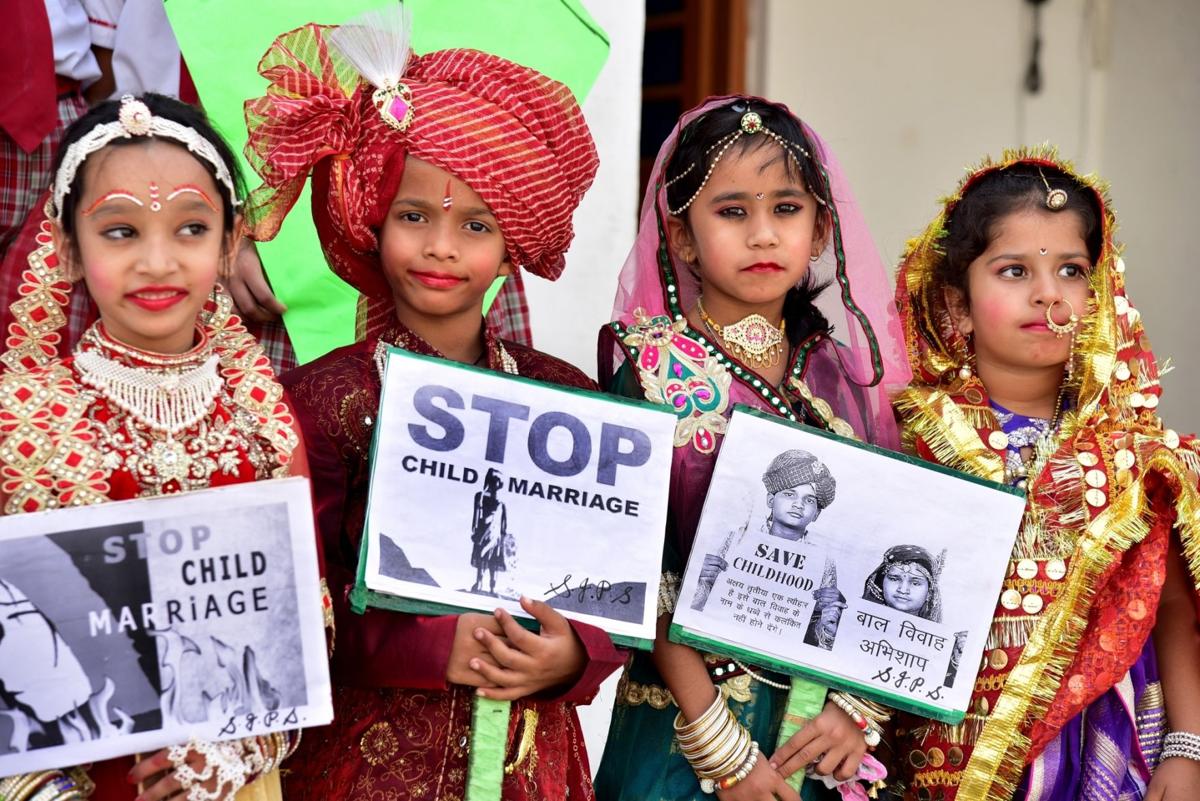Published on: November 25, 2021

ISSUES OF CHILD MARRIAGE
ISSUES OF CHILD MARRIAGE

A child marriage is one in which the girl is below the age of eighteen years and the boy is below the age of twenty one years.
REASONS
- Economic necessity
- Male protection for daughters
- Child bearing
- Lack of education
- Caste & birth order and family size
- Patriarchy and gender discrimination against girls
- Brings in new workforce in to their families that can enhance production within the household.
STATISTICS
- According to a United Nations report, India has the second highest number of child marriages.
- The rates of child marriage vary between states and are as high as 69% and 65% in Bihar and Rajasthan.
- UNICEF’s State of the World’s Children 2016 – Girls from the poorest households—and those living in rural areas—face twice the risk of being married before 18 as girls from the richest households or those living in urban areas
- Data from the fourth round of the National Family Health Survey (NFHS4) in 2015-16 shows that even before Covid, one in four girls in India was being married before 18.
- Around 8 per cent of women aged 15-19 years were mothers or pregnant at the time of the survey.
IMPACT
- Denies her fundamental rights that every person is entitled to include the right to education, the right to rest and leisure and the right to protection from sexual abuse and exploitation.
- When girls are married young, they are forced to take up household responsibilities. This deprives them of a chance to educate and empower themselves.
- The most physiologically and psychologically draining situation for a young girl is if she attains early motherhood.
- Because of lack of protection child brides are often exposed to serious health risks, early pregnancy, and various STDs especially HIV/AIDS.
- Girl children often face situations of bonded labour, enslavement, commercial sexual
- Exploitation and violence as a result of child marriage. She is forced to take up roles that she isn’t mentally prepared for. It eventually leads to isolation and depression.
- Other – teenage pregnancy, population growth, child stunting, poor learning outcomes for children and the loss of women’s participation in the workforce.
WAY FORWARD
- Legislation is one part of the approach. Karnataka amended the Prohibition of Child Marriage Act in 2017, declaring every child marriage void ab initio, making it a cognisable offence, and introducing a minimum period of rigorous imprisonment for all who enable a child marriage.
- Other drivers of social change must play a fundamental role. These include expansion of secondary education, access to safe and affordable public transport, and support for young women to apply their education to earn a livelihood.
- Expansion of education goes beyond access. Girls must be able to attend school regularly, remain there, and achieve. States can leverage their network of residential schools, girls’ hostels, and public transport, especially in underserved areas, to ensure that teenage girls do not get pushed out of education.
- Girls’ clubs should be systematically formed in high school to provide informal social networks for group study, solidarity, and resilience. Teachers should hold regular gender equality conversations with high school girls and boys to shape progressive attitudes that will sustain into adulthood
- Empowerment measures, too, are required to end child marriage, such as community engagement through programmes like Mahila Samakhya. Children’s village assemblies in the 2.5 lakh gram panchayats across India can provide a platform for children to voice their concerns.
- Governmental action can drive social change. Field bureaucrats across multiple departments, including teachers, anganwadi supervisors, panchayat and revenue staff, all of whom interact with rural communities, should be notified as child marriage prohibition officers. Finally, and most important of all, decentralising birth and marriage registration to gram panchayats will protect women and girls with essential age and marriage documents, thus better enabling them to claim their rights.
- Conditional cash transfers (CCTs) have been the main policy instrument introduced by most states in the last two decades to end child marriage. However, with one-size-fits-all conditions, that may not always be responsive to the lived realities of teenage girls.

